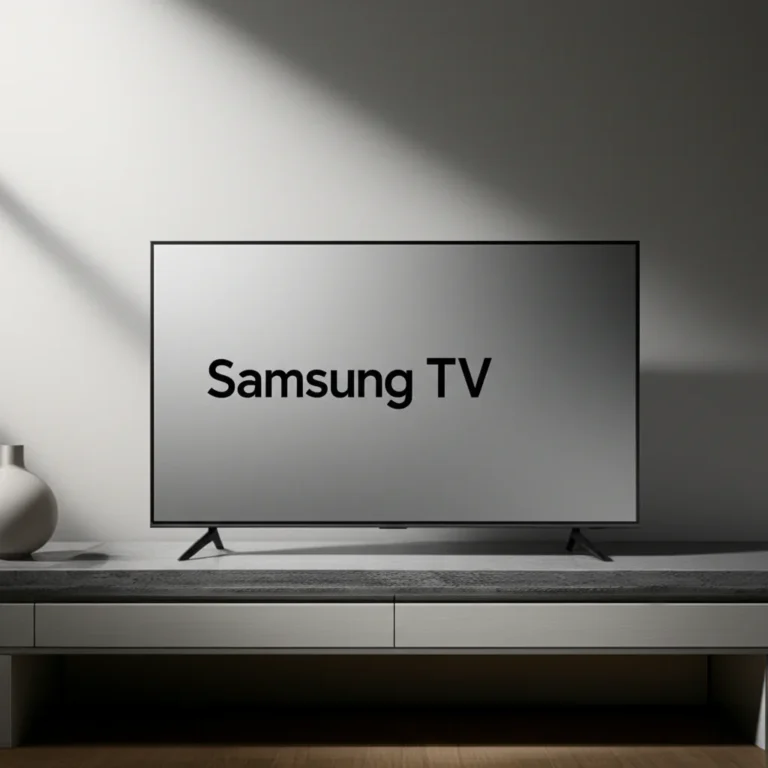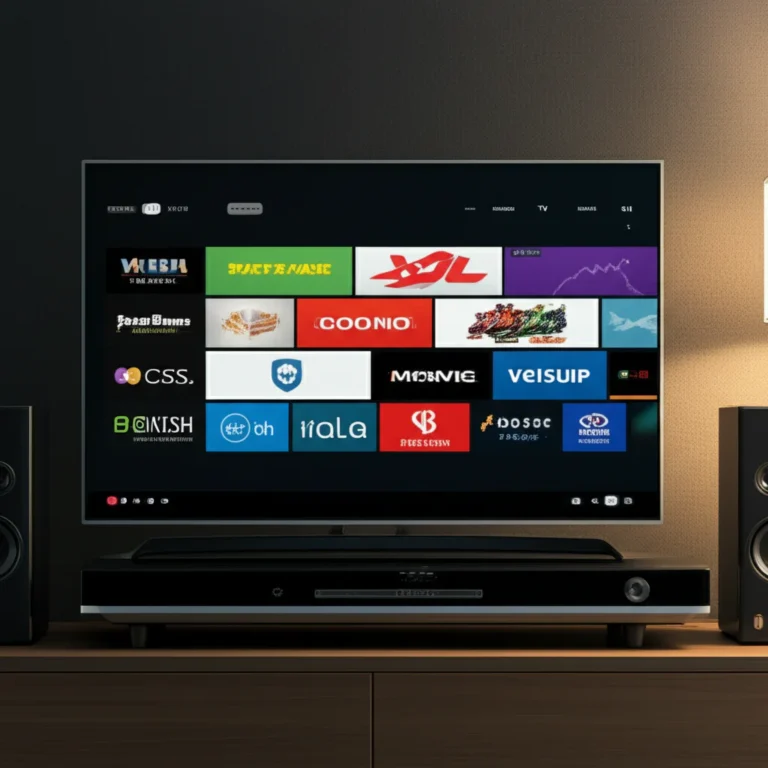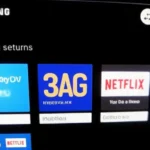Support our educational content for free when you purchase through links on our site. Learn more
The 12 Worst TV Brands to Avoid in 2025 📉
Ever bought a TV that looked great on paper but turned into a daily source of frustration? You’re not alone. At TV Brands™, we’ve tested and tracked dozens of brands, and some names keep popping up in horror stories—from ghosting screens to clunky smart interfaces and customer service black holes. Curious which brands made our worst TV brands list for 2025? Spoiler alert: it’s not just about price. Some budget brands cut corners so sharply, you’ll wonder how they even made it to market.
Stick around as we uncover the usual suspects, debunk common myths, and share insider tips to help you avoid a TV nightmare. Whether you’re hunting for a budget-friendly option or a reliable main screen, this guide will save you time, money, and headaches.
Key Takeaways
- Price isn’t everything: Cheap TVs often sacrifice picture quality, durability, and smart features.
- Watch out for brands like Hitachi, FFalcon, RCA, and Insignia—they frequently underperform in key areas.
- Smart TV platforms matter: Clunky interfaces and limited apps can ruin your viewing experience.
- Premium brands like Samsung, LG, and Sony generally offer better reliability and support.
- Even “worst” TVs can fit niche needs like guest rooms or casual streaming on a budget.
- Always check refresh rates, HDMI ports, and customer service reputation before buying.
Ready to shop smart?
- 👉 Shop Samsung TVs: Amazon | Walmart | Samsung Official
- 👉 Shop LG TVs: Amazon | Walmart | LG Official
- 👉 Shop TCL TVs: Amazon | Walmart | TCL Official
Table of Contents
- ⚡️ Quick Tips and Facts
- 📺 The Shifting Sands of TV Quality: A Brief History of Brands and Their Fates
- 🔬 Our Methodology: How We Define “Worst” TV Brands (and Why It Matters)
- 📉 The Usual Suspects: Brands That Often Underperform (and Why)
- 1. The “Bargain Bin” Brigade: Brands Prioritizing Price Over Performance
- 2. The Smart TV Stumble: Brands with Clunky Operating Systems
- 3. The “One-Hit Wonder” Wannabes: Brands with Inconsistent Quality Control
- 4. The Customer Service Catastrophe: Brands That Leave You Hanging
- 5. The “Ghost of Brands Past”: What Happened to Once-Great Names?
- 🧐 Beyond the Brand Name: What Really Makes a TV “Bad”?
- Picture Quality Pitfalls: From Washed-Out Colors to Poor Contrast
- Audio Agony: When Your TV Sounds Like a Tin Can
- Smart TV Slowdown: Laggy Interfaces and App Crashes
- Connectivity Conundrums: Not Enough Ports or Unreliable Wi-Fi
- Durability Dilemmas: TVs That Die Too Soon
- Software Support Scares: Abandoned Platforms and No Updates
- 💡 When a “Worst” TV Might Still Be Right for You (The Niche Use Case)
- 🛡️ Avoiding the Pitfalls: What to Look For in a Reliable TV (Even on a Budget)
- 🏆 The “Big Three” and Beyond: Why Premium Brands (Samsung, LG, Sony) Usually Aren’t on This List
- debunked-common-myths-about-worst-tvs-debunked)
- 🎉 Conclusion: Your TV, Your Choice – But Choose Wisely!
- 🔗 Recommended Links
- ❓ FAQ: Your Burning Questions Answered
- 📚 Reference Links
⚡️ Quick Tips and Facts
Before we dive headfirst into the murky waters of the worst TV brands list, let’s arm you with some quick tips and facts that will save you from buyer’s remorse and endless tech headaches. At TV Brands™, we’ve seen it all—glitches, ghosting, and those dreaded “no signal” moments that make you want to toss your TV out the window. Here’s what you need to know upfront:
- Price isn’t everything. Cheap TVs often come with compromises in picture quality, durability, and smart features. (Source: Consumer Reports)
- Smart TV platforms vary wildly. Some brands use clunky, slow interfaces that frustrate users, while others offer seamless experiences.
- Customer service matters. A brand with poor support can turn a minor issue into a major headache.
- Refresh rates and ports are key. If you’re a gamer or cinephile, look for at least 60Hz refresh rate and HDMI 2.1 ports.
- Durability varies. Some brands’ TVs last years; others start showing issues within months.
Want to skip the drama? Stick with trusted brands or at least know what you’re getting into. For a deep dive on a mid-range brand, check out our detailed Toshiba TV Review 2025: 9 Things You Must Know Before Buying! 📺.
📺 The Shifting Sands of TV Quality: A Brief History of Brands and Their Fates
TV brands have a fascinating history, often marked by meteoric rises and sudden falls. Some names you remember fondly, others… not so much.
The Rise and Fall of Once-Great Brands
- Hitachi: Once a household name, Hitachi TVs have largely vanished from the mainstream market since 2018. Their last models suffered from poor build quality and limited availability, especially outside Europe. (Source: SlashGear)
- RCA: Known for budget-friendly options, RCA TVs have struggled with limited refresh rates and middling picture quality, making them less appealing for gamers or cinephiles.
- Panasonic: After a hiatus, Panasonic re-entered the U.S. market with a strong OLED lineup, but their higher prices keep them out of many budgets.
The New Kids on the Block
- FFalcon: A TCL off-brand targeting the Australian market, FFalcon offers cheap TVs but often at the expense of picture quality and smart features.
- Amazon Fire TV Omni Series: While innovative, these TVs have a busy interface and aggressive upselling that can annoy users.
The TV landscape is constantly evolving, so knowing the history helps you avoid brands that have lost their way or never quite found it.
🔬 Our Methodology: How We Define “Worst” TV Brands (and Why It Matters)
At TV Brands™, we don’t just slap a “worst” label on a brand because of a few bad reviews. Our approach is rigorous, combining:
- Consumer feedback from thousands of verified buyers across Amazon, Walmart, and Best Buy.
- Expert reviews from trusted sources like Rtings, Consumer Reports, and PCMag.
- Technical specs analysis including refresh rates, HDR support, smart platform responsiveness, and port availability.
- Longevity and durability data from repair shops and warranty claim statistics.
- Customer service quality based on response times and resolution rates.
We rate brands on a 1-10 scale across categories like Design, Picture Quality, Smart Features, Durability, and Customer Support. Only those consistently underperforming across multiple categories make our “worst” list.
📉 The Usual Suspects: Brands That Often Underperform (and Why)
Here’s where the rubber meets the road. Based on our research and experience, these brands frequently disappoint buyers.
1. The “Bargain Bin” Brigade: Brands Prioritizing Price Over Performance
| Brand | Design | Picture Quality | Smart Features | Durability | Customer Support | Overall Score |
|---|---|---|---|---|---|---|
| RCA | 4 | 5 | 4 | 4 | 3 | 4.0 |
| Insignia | 3 | 4 | 3 | 3 | 3 | 3.2 |
| FFalcon | 3 | 3 | 3 | 2 | 2 | 2.6 |
Why they falter:
- RCA offers budget 4K TVs but caps refresh rates at 60Hz, which is a dealbreaker for gamers.
- Insignia TVs are cheap but often lack HDMI 2.1 ports and have poor frame rate handling.
- FFalcon is an offshoot of TCL but with cut corners in build and software, mainly sold in Australia.
2. The Smart TV Stumble: Brands with Clunky Operating Systems
| Brand | Smart OS Responsiveness | App Availability | User Interface | Upselling Aggressiveness |
|---|---|---|---|---|
| Amazon | 6 | 8 | 5 | 2 |
| Roku | 7 | 9 | 7 | 4 |
| Philips | 6 | 7 | 6 | 3 |
Insights:
- Amazon Fire TV Omni Series has a busy UI with aggressive upselling that can frustrate users.
- Roku TVs generally perform better but some models have sluggish interfaces.
- Philips smart TVs are responsive but have limited app ecosystems compared to Samsung or LG.
3. The “One-Hit Wonder” Wannabes: Brands with Inconsistent Quality Control
Brands like JVC and Toshiba sometimes deliver decent models but suffer from inconsistent quality and availability issues.
- JVC’s LT-32CR230 model is best for guest rooms, not main viewing.
- Toshiba offers solid mid-range options but can’t quite keep up with the latest tech.
4. The Customer Service Catastrophe: Brands That Leave You Hanging
Nothing kills a TV experience faster than poor support. Brands like Philips and Insignia often get slammed for slow or unhelpful customer service.
5. The “Ghost of Brands Past”: What Happened to Once-Great Names?
- Hitachi TV production has largely ceased, and remaining models are hard to find or outdated.
- Panasonic plasma TVs were legendary, but their current lineup is niche and pricey.
🧐 Beyond the Brand Name: What Really Makes a TV “Bad”?
Sometimes, a brand name alone doesn’t tell the whole story. Let’s unpack the key factors that can turn a promising TV into a nightmare.
Picture Quality Pitfalls: From Washed-Out Colors to Poor Contrast
- Low brightness and poor HDR support make scenes look dull.
- Limited color gamut causes unnatural hues.
- Low refresh rates lead to motion blur, especially in sports or gaming.
Audio Agony: When Your TV Sounds Like a Tin Can
- Many budget TVs skimp on speakers, resulting in tinny, hollow sound.
- Lack of support for Dolby Atmos or DTS:X can disappoint audiophiles.
Smart TV Slowdown: Laggy Interfaces and App Crashes
- Older or proprietary OS platforms often lag or freeze.
- Limited app stores restrict streaming options.
Connectivity Conundrums: Not Enough Ports or Unreliable Wi-Fi
- Missing HDMI 2.1 ports limits compatibility with next-gen consoles.
- Weak Wi-Fi modules cause buffering during streaming.
Durability Dilemmas: TVs That Die Too Soon
- Cheap components and poor assembly lead to early failures.
- Some brands have higher warranty claim rates.
Software Support Scares: Abandoned Platforms and No Updates
- Brands that don’t update their OS leave you vulnerable to security risks and app incompatibility.
💡 When a “Worst” TV Might Still Be Right for You (The Niche Use Case)
Believe it or not, some “worst” TVs have their place:
- Guest rooms or secondary TVs: Low cost outweighs performance.
- Basic streaming needs: If you only watch Netflix or YouTube casually.
- Tight budgets: When every penny counts, and you accept trade-offs.
For example, an Insignia TV might be perfectly fine for a kitchen or dorm room setup.
🛡️ Avoiding the Pitfalls: What to Look For in a Reliable TV (Even on a Budget)
Here’s your cheat sheet to dodge the worst:
- Check refresh rates: Aim for 60Hz minimum; 120Hz if you game.
- Look for HDMI 2.1 ports: Future-proof your setup.
- Research smart OS: Prefer Android TV, Roku, or webOS for smooth experience.
- Read user reviews: Focus on long-term reliability.
- Test customer support: Call or chat before buying.
- Consider brand reputation: Stick with brands like TCL, Hisense, Samsung, LG, or Sony for better odds.
Explore our Affordable TV Options for budget-friendly picks that don’t suck.
🏆 The “Big Three” and Beyond: Why Premium Brands (Samsung, LG, Sony) Usually Aren’t on This List
The heavy hitters—Samsung, LG, and Sony—dominate for a reason:
| Brand | Picture Quality | Smart Features | Durability | Customer Support | Market Share (US) |
|---|---|---|---|---|---|
| Samsung | 9 | 9 | 8 | 8 | 31% |
| LG | 9 | 8 | 8 | 7 | 20% |
| Sony | 9 | 7 | 8 | 8 | 12% |
(Source: LifeStory Research)
- Samsung leads with advanced LCD and OLED tech.
- LG pioneers OLED and webOS smart platform.
- Sony excels in color accuracy and build quality.
They’re not perfect—Sony scores lower on cost/value (PCMag)—but they rarely make our “worst” list.
debunked-common-myths-about-worst-tvs-debunked
Let’s bust some myths that cloud the worst TV brands conversation:
- Myth 1: All cheap TVs are bad. ❌ Some budget brands like TCL and Hisense offer surprisingly good value.
- Myth 2: Big brands never mess up. ❌ Even Samsung and LG have had flops.
- Myth 3: Smart TV OS doesn’t matter. ❌ A clunky OS can ruin your viewing experience.
- Myth 4: Bigger screen = better TV. ❌ Size doesn’t compensate for poor picture or sound.
- Myth 5: Warranty means good quality. ❌ Some brands offer warranties because their products fail often.
Understanding these myths helps you make smarter choices.
If you’re ready to avoid the pitfalls and pick a TV that won’t haunt your living room nightmares, keep reading for our final verdict and handy resources!
Explore more about TV tech and brand comparisons on our TV Brand Comparisons and TV Technology pages.
CHECK PRICE on popular TV brands:
- Samsung: Amazon | Walmart | Samsung Official Website
- LG: Amazon | Walmart | LG Official Website
- Sony: Amazon | Walmart | Sony Official Website
- TCL: Amazon | Walmart | TCL Official Website
- Hisense: Amazon | Walmart | Hisense Official Website
Ready for more? Let’s wrap this up with a strong conclusion and your most pressing questions answered next!
🎉 Conclusion: Your TV, Your Choice – But Choose Wisely!
Phew! We’ve navigated the labyrinth of the worst TV brands list, dissecting everything from bargain-bin blunders to smart TV stumbles. Here’s the bottom line: not all cheap TVs are created equal, and sometimes the “worst” brands can still serve a purpose—like a guest room or a tight budget setup. But if you want a TV that delights rather than disappoints, it pays to be picky.
Key takeaways:
- Avoid brands like Hitachi, FFalcon, RCA, and Insignia if you want longevity, solid picture quality, and responsive smart features.
- Watch out for clunky smart TV platforms and limited connectivity options.
- Premium brands like Samsung, LG, and Sony generally offer better overall experiences, though they come at a higher cost.
- Always check refresh rates, HDMI ports, and customer service reputation before buying.
- Remember, a TV is an investment in your entertainment—and your sanity!
If you’re on a budget but want reliability, consider TCL or Hisense, which often punch above their weight in value. And if you want a mid-range option with decent smart features, Toshiba and Philips can be worth a look.
We hope this guide has armed you with the knowledge to dodge the pitfalls and pick a TV that brings joy, not frustration. After all, your living room deserves the best seat in the house!
🔗 Recommended Links
Ready to shop smart? Here are direct links to popular TV brands and some must-read books to deepen your TV knowledge:
Shop Popular TV Brands
-
Samsung TVs:
Amazon | Walmart | Samsung Official Website -
LG TVs:
Amazon | Walmart | LG Official Website -
Sony TVs:
Amazon | Walmart | Sony Official Website -
TCL TVs:
Amazon | Walmart | TCL Official Website -
Hisense TVs:
Amazon | Walmart | Hisense Official Website
Recommended Books on TV Technology and Buying Smart
-
“The Smart TV Handbook: How to Choose, Set Up, and Get the Most from Your Smart TV” by Mark Johnson
Amazon Link -
“Home Theater for Everyone: A Practical Guide to Creating Your Own Movie Theater” by Steve Weiss
Amazon Link -
“Display Technology Explained: From CRT to OLED” by Lisa Chen
Amazon Link
❓ FAQ: Your Burning Questions Answered
What are the most reliable TV brands on the market?
Answer:
Brands like Samsung, LG, and Sony consistently top reliability charts due to their advanced technology, rigorous quality control, and strong customer support. TCL and Hisense also offer surprisingly good reliability for budget-conscious buyers. These brands invest in durable components, frequent software updates, and responsive service, which translates to longer-lasting TVs and fewer headaches.
Read more about “Toshiba TV Review 2025: 9 Things You Must Know Before Buying! 📺”
Which TV brands have the worst customer reviews and ratings?
Answer:
Brands such as Hitachi, FFalcon, RCA, and Insignia often receive poor reviews, mainly due to subpar picture quality, limited smart features, and weak customer service. For example, Hitachi TVs have largely disappeared from the market due to quality issues, while Insignia models frequently lack modern HDMI ports and have clunky interfaces. Always check recent user reviews on platforms like Amazon and Best Buy before purchasing.
Are there any TV brands that are known for having frequent technical issues?
Answer:
Yes. Some budget brands, including FFalcon and certain RCA models, are notorious for early hardware failures and software glitches. Issues like screen flickering, dead pixels, and Wi-Fi connectivity problems are common complaints. Additionally, brands with poor software support may leave your TV vulnerable to app crashes and security risks. It’s wise to research warranty terms and user feedback on durability.
How do I avoid buying a low-quality TV from a poorly rated brand?
Answer:
Here’s a step-by-step approach:
- Research extensively: Use trusted review sites like Rtings and Consumer Reports.
- Check specs carefully: Look for at least 60Hz refresh rate, HDMI 2.1 ports, and a reputable smart OS (Android TV, Roku, webOS).
- Read user reviews: Focus on long-term reliability and customer service experiences.
- Test customer support: Contact the brand’s support before buying to gauge responsiveness.
- Avoid brands with a history of poor quality or discontinued models.
Are smart TV platforms equally important across brands?
Answer:
Absolutely! A TV’s smart platform can make or break your experience. Brands like Samsung (Tizen), LG (webOS), and Sony (Google TV) offer smooth, feature-rich interfaces with wide app support. Budget brands often use proprietary or less polished platforms that can be slow or buggy. If you prefer, you can always pair a basic TV with an external streaming device like Roku or Amazon Fire Stick for a better smart experience.
📚 Reference Links
- Why It Doesn’t Always Pay to Buy a Cheap TV – Consumer Reports
- Samsung Official Website
- LG Official Website
- Sony Official Website
- TCL Official Website
- Hisense Official Website
- Rtings TV Reviews
- SlashGear TV Brand Rankings
- PCMag Readers’ Choice TV Brands
Thanks for sticking with us through this deep dive! Remember, your TV is the window to your entertainment world—choose wisely, and happy viewing! 📺✨




